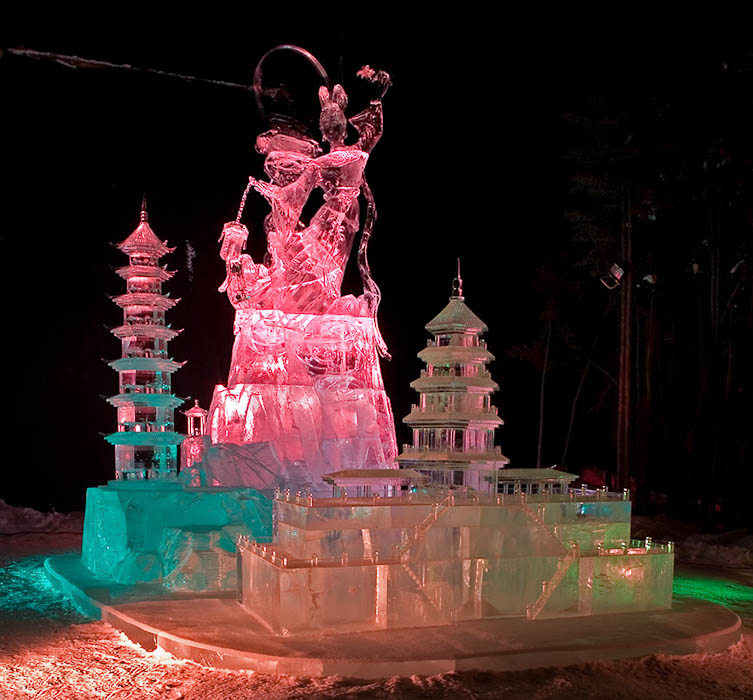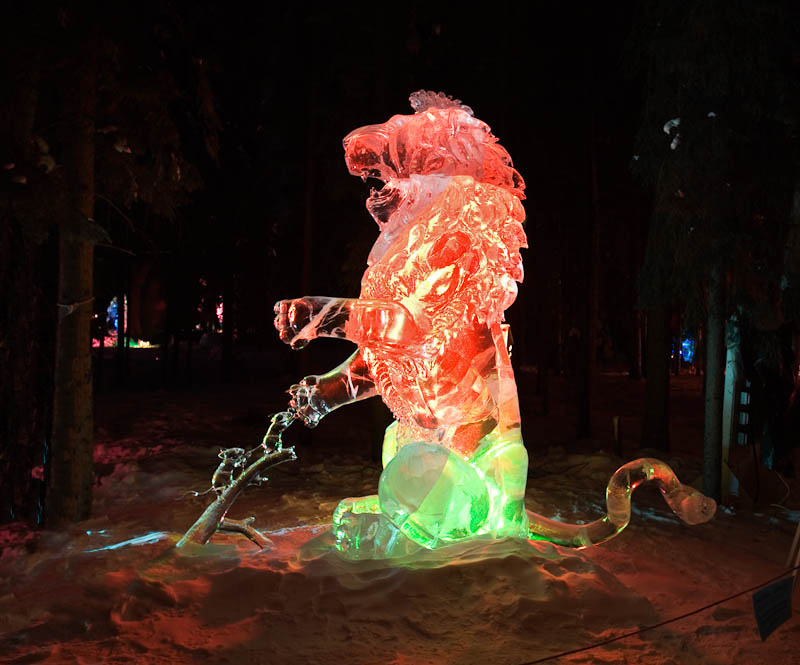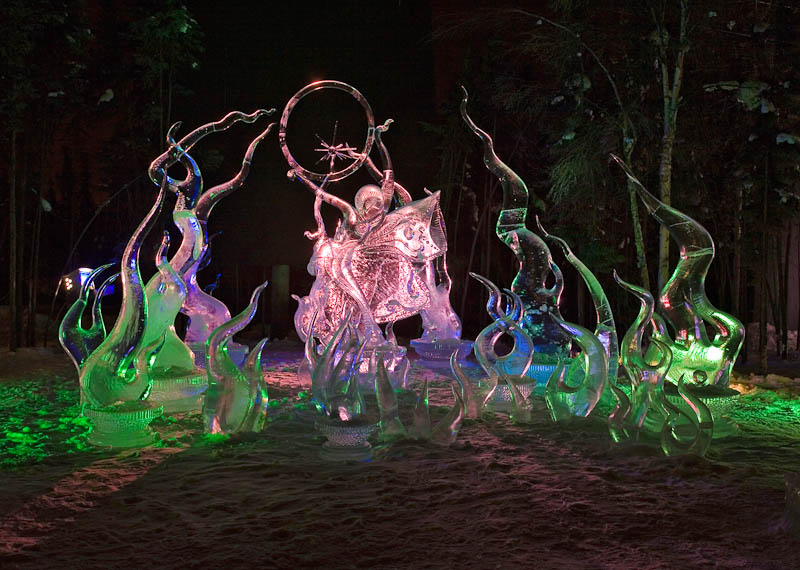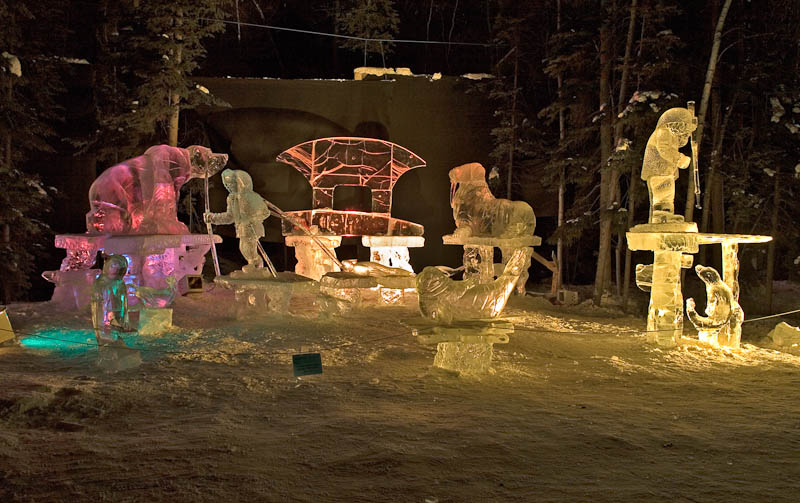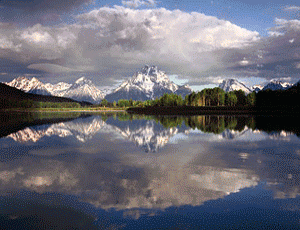|
Beauty, like ice, our footing does betray; Who can tread sure on the smooth, slippery way: Pleased with the surface, we glide swiftly on, And see the dangers that we cannot shun. |
~John Dryden
|
Those of us living in the colder climes, have coexisted with snow and ice for a good portion of our lives. The silent beauty of a white landscape covered in snow has often been the focus of our photographic endeavors, when winter has placed it’s hand upon the earth. Much less an object of our attention has been the ice that forms as the water in ponds and lakes turns to stone. To most of us, this stone is lifeless, amorphous and cold, but to some, it is a medium of choice. Awaiting only the hand of the artist to give shape to the beauty that lies within. Ice sculpture is a form of art that usesiceas theraw material. In the world of ice sculpture, the high point of the year is the World Ice Art Championships held each year in Fairbanks, Alaska. |
Click on image for more information
Click on image for more information
In Fairbanks, winter comes early and normally stays late. That’s why it’s not uncommon to hear people describe the four seasons in Alaska as early winter, winter, late winter, and next winter.
From about November through the end of March, the natural state of water in Alaska’s Interior is solid. The water in a number of gravel pits around Fairbanks freezes deep and unusually clear. Because of this, theIce Alaskaice carving competition draws competitors from around the world each year. This competition, held in March, is formally called the World Ice Art Championships.
What makes the Fairbanks ice so spectacular for carving? Ice that forms in lakes and rivers is made from water that is subjected to currents. This in turn causes bubbles and white “discolorations” in the ice. From the standpoint of a sculptor. These natural flaws are defects in the ice’s structure. The Fairbanks ice is harvested from local gravel pit ponds, which are small enough that there are no currents to compromise the ice as it forms.
In the past, one of the visiting sculptors, in his high praise of Fairbanks ice, called it “the best I’ve ever sculpted.” He named it —The Arctic Diamond. It has been said that, “One can read a newspaper through a 40 inch thick piece of Fairbanks ice.” Headlines maybe, but not the text.
There are two classes of competition, single-block and multi-block. In the single-block competition, forty teams of 2 persons each, receive one block of ice measuring 5′ x 8′ x 3′. This block weighs roughly 7,800 pounds, or nearly 4 tons. In the multi-block competition, twenty teams of 4 persons each receive 12 blocks of ice measuring 4′ x 4′ x 3′. These blocks weigh approximately 3,000 each for an aggregate weight of 36,000 pounds, nearly 18 tons. Each of the two classes are divided into two categories: abstract and realistic.
Sculptors from around the world use tools ranging from chainsaws to woodcarving chisels to Dremel® Tools to carve the blocks. Some tools are purchased commercially, some are improvised. The only limitation on the carving is that it must only contain ice from the original block. The artists can cut, shape and piece the block into whatever shape the desire. Some of the resulting sculptures are in fact much larger than the original blocks.
Click on image for more information
Click on image for more information
In order to get a full appreciation of the ice art one should really visit the ice park during the day to see how the crystal clear ice sparkles in the spring sunshine. Then, return again at night to photograph the creations when they are lit by colored lights.
The 3D nature of scultpures and the stark contrast between light and dark make for a stunning visual experience.
Be sure and bring your tripod. Using a low ISO speed and long exposure gives the best results. Hand holding your camera or using flash is not recommended.
If you’re there at the right time and especially lucky, you may even see the aurora borealis dancing across the Northern sky above.
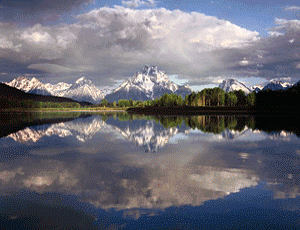
About Miles Hecker
Miles has been involved with photography for over forty years. He teaches digital photography at Casper College in Casper,Wyoming. His photos have won awards fromNatures Best magazine,Photo.net, The Luminous LandscapeandWyoming WIldlife . Miles’ photos have been published in American Vignette, Backpacker Magazine, Natures Best Images, Popular Photography, Wyoming Audubon, and Wyoming Wildlife. He is co-founder ofWyoFOTO LLC.
Geotagged Photolocation Index
April 2012
You May Also Enjoy...
Antarctica 2014 – A Most Amazing Trip
All Photographs By Kevin Raber The Fly Over Antarctica Workshop Sunset Pléneau Bay The day finally came to leave for another trip to Antarctica. There has never
